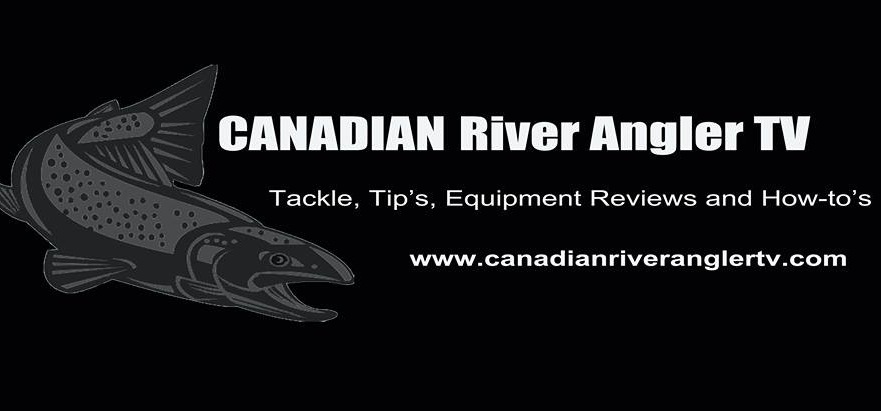- Home
- Links/How To
Categories
Links/How To

Great Sites for Beginner Float Fishing Tips:
Basics:
Shotting Patterns : http://www.anglersinternational.com/shotting.html
Casting Info: http://www.anglersinternational.com/text/casting.pdf
Knots:
http://www.gogaspe.com/salmon/knots/fishknot2.htm
http://www.bobberstop.com/knots.html
http://www.animatedknots.com/indexfishing.php?LogoImage=LogoGrog.jpg&Website=www.animatedknots.com
Forums:
http://www.centerpintalk.com/forum/forum.php
http://www.greybruceoutdoors.com/boards/
http://www.ontariofishingforums.com/forum/
http://www.lakesimcoeoutdoors.com/forums/?showforum=6
Guides:
Graham Bristow
416-937-4911
www.aperfectdrift.com
link :http://www.aperfectdrift.com/index.html
Custom Reels:
Contact Info: mike@riversedgereels.ca
Link: http://www.riversedgereels.ca
Affiliates & Friends:

Great info, tips and reviews done by the fantastic guys over at Canadian River Angler TV. Please Check Them Out @
http://www.canadianriveranglertv.com/

Steelhead Manifesto.
A manifesto is a published verbal declaration of the intentions, motives, or views of the issuer, be it individual, or group. It often is artistic in nature, but may present an individual's life stance or passion. In this case this is my manifesto relating to the lifelong pursuit of the Steelhead.
www.steelheadmanifesto.blogspot.ca
Hunt Camps:
Atwood Island Lodge
Link: http://www.atwoodisland.com/
Email: atwoodisland@atwoodisland.com
How to tie a Roe Bag:
Check out this small video for an example.
Shotting Patterns
Sure Shot Lead Split Shots available in sizes 7 sizes
Split shots are an essential tool when float fishing. By placing them in different positions on the line, the angler can greatly modify his bait presentation. Once a float fisherman understands how the different shotting patterns work, he can effectively cover nearly any spot in a river.
The ultimate goal in shotting is to achieve the most natural drift and bait presentation possible at the required depth. The key is to understand how the various shotting patterns affect the speed at which the bait will reach depth and how the bait will be affected by the current once it is at depth.
To fully appreciate the advantages of different shotting patterns, it is important to consider how current flows through rivers. A typical cross section of river will have a number of different currents flowing together. In general, the slowest current will be at the bottom and edges of the river and the fastest current will flow at the top and middle of the river. These variances in current speed can be seen when watching autumn leaves flow downstream. The leaves on the water’s surface travel much faster than those caught along the edges and in underwater currents.
Proper shotting allows the line cut through the faster surface current and the bait to drift at the speed of the slower bottom current, ahead of the split shot and float. Whenever shotting a float, it is essential to use good quality round shots to avoid line twist under the float.
As a final thought, try using a variety of shotting patterns for every pool or run. Each pattern presents the bait differently, allowing it to catch different underwater currents and cover different depths. Covering these different holding areas within a pool or run will maximize the catch out of any spot.
Standard Shotting Pattern
The shots are equally spaced on the line, from below the float down to the swivel and leader. Typically, the shots taper in size from the largest, directly below the float, to the smallest just above the swivel. When this set-up is running through the water, the bait will drift naturally ahead of the float and the line will curve smoothly upwards to the float.
Stacking Shots
Some anglers will substitute several smaller shots stacked side by side, rather than using a single larger split shot. For example using four No.4 shots to replace one AAA shot (4x.20g=.80g). This allows them more flexibility when sliding shots around from one set-up to another and tends to present set-ups with slightly more finesse. As an added bonus, anglers can get away with a smaller variety of shots in their vest. Stacked shot set-ups should be prepared in advance on a shot line to reduce downtime while fishing.
Tapered Shotting
This shotting pattern allows for a longer tapered presentation between the float and the bait. The spacing between the shots increase as the size of the shot decreases down the line. This pattern offers a very natural free-drifting presentation, but is relatively slow to sink down to depth. It is ideal for use in slow pools and clear water, but not recommended for use in fast or deep runs.
Accelerated Shotting
This is basically the inverse of the tapered shotting pattern. The shots are spaced closer together as they run down the line. The basic idea of presenting a tapered curving line towards the fish remains the same, but most of the weight is placed down near the leader. This pattern efficiently cuts through the surface current and pulls the bait down to depth quickly. Accelerated shotting is perfect for faster runs and deeper pools.
Bulk Shotting
Bulk shotting is the most effective way to cut through current and get the bait down to depth quickly. All the shots are stacked just above the leader with the last few shots spread out slightly to offer a more tapered presentation. This set-up may hinder the natural presentation of the bait, but is sometimes the only useful pattern in fast deep water.
Shallow Water Shotting
In shallow water where fish may be easily spooked, use this pattern with a small float and light lines. Load the shot directly below the float and space a few smaller shot along the line above the leader. This pattern is ideal for fishing shallow pools and runs where there isn’t enough depth for a useful length of line under the float.
Over-Shotting
When fishing in very fast water, over-shotting is sometimes the only way to break through the rushing surface water and still present the bait at a natural speed. This set-up is the same as bulk shotting, but extra shots are added to the line (as much as twice the regular carrying capacity of the float can be used). The float will sink completely under the weight of the shots. Hold the float back firmly so that the force of the current pushes the float to the surface. Then allow the float to trot downstream at a pace that keeps it kiting just on the surface. By adjusting the length of the line under the float and the amount of weight, the bait can be run at a fairly slow pace through fast runs, allowing it to catch slower underwater currents. Because there is no slack line between the float and rod tip, strikes will register directly on the rod.
Bottom Bouncing
In very large and deep rivers, bulk shotting and overshotting may still not be enough to hold the bait down to the bottom. By using a three way swivel with first eye tied to a short leader down to a pencil weight, the second eye running the main leader to the hook and the third eye is attached to the main line up to the float. This rigging pattern is used extensively in the Pacific Northwest.
How to Rig a Float
The key to success when using river floats is to rig them "top and bottom". This allows the line to be held above or on the surface of the water, ensuring that the float can be properly controlled.
Rigging floats “top and bottom” requires a small but essential piece of tackle called a float cap. A float cap is silicone tubing that is available in various diameters and colours, either pre-cut or in longer lengths to be cut to size as required. The float cap should have a slightly smaller diameter opening than the stem of the float, so that it holds the float firmly in place.
Before adding split shot to the line, thread two float caps onto the line.
Then pull one float cap over each end of the float stem, one on top and one on the bottom. This holds the float on the line and allows the float to be slid up or down to the required depth.
Positioning the bottom float cap so that it extends just beyond the end of the float helps avoid tangle-ups, as the line is less likely to snag the stem of the float when casting. When the float needs to be changed, the float caps are simply pulled off the ends of the float and onto the new one.

Some anglers recommend placing a small split shot at the base of the float and running the float cap over it. This acts like a keel on a boat, adding stability to the float. Another tip is to use an extra float cap on the bottom stem of the float to help secure the float tightly in place. This third float cap can also act as a spare making it is easy to replace one of the other caps (if damaged) without having to cut the line and re-rig everything.
To rig a peg style float, remove the stem and feed the line through the centre of float before replacing the stem. Pegged floats generally grip the line tighter than a float held with float caps. However, they can be considered less convenient since the line must be cut every time the float needs to be exchanged. Float caps should still be used with pegged floats to help reduce tangle-ups, particularly on the bottom of the float.
The Clinch Knot
This knot is used to tie the fly to the end of the tippet.
1. Insert 6” to 8” of tippet thought the eye of the hook.
2. Hold the fly in you left hand and wind the tag end around the standing part of the leader5 times, keeping small loops immediately adjacent to the hook eye open. This loop is east to keep open if you pinch it between the thumb and forefinger of your left hand.
3. Bring the tag end back through the hook eye and grasp with your thumb and forefinger of your left hand.
4. Lubricate w/ saliva and pull tight buy pulling on the standing part of line, DO NOT pull on the tag end, JUST hold it as stated in step #3
5. Trim leftover line.
The Surgeon’s Knot
This Knot is used to tie tippet to end of leader or for the finer sections of tapered leaders. Better then the barrel knot for joining pieces of leader material that differ by more than .003" in diameter.
1. Clip off desired length of tippet plus 4” to 6”
2. Lay next to the end of your leader with the two strands over lapping by 4” to 6”.
3. Tie an overhand knot in this doubled section by forming a loop and bringing the leader end and the entire tippet through the loop together. KEEP LOOP OPEN
4. Repeat step #3 again by doubling the overhand knot.
5. Lubricate and tighten by pulling all four ends steadily.
6. Trim tag ends close to knot
The Surgeon's Loop
Use to tie loop in end of leader.
1. Form a loop on the end of the leader.
2. Make a simple overhand knot in the double line.
3. Then bring the looped end through the overhand knot again. Lubricate w/ silliva and tighten by pulling on the loop end and the standing leader and tag end in the other.
4. Trim tag end close to the knot
 Loading... Please wait...
Loading... Please wait...














